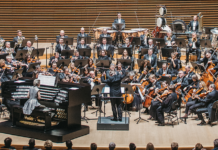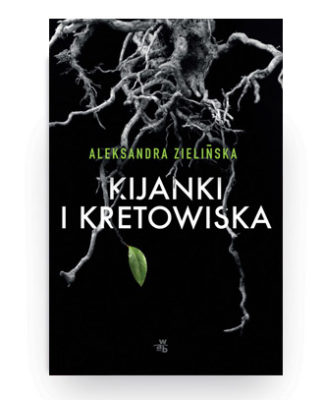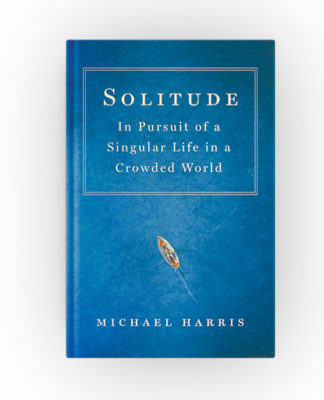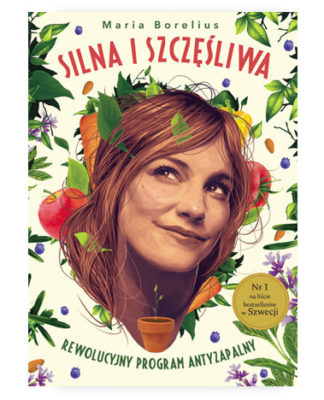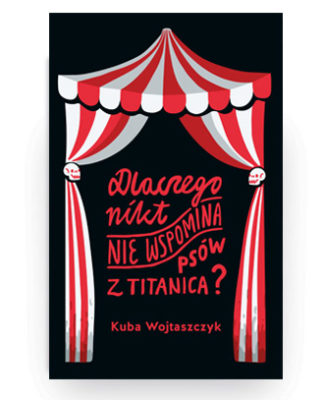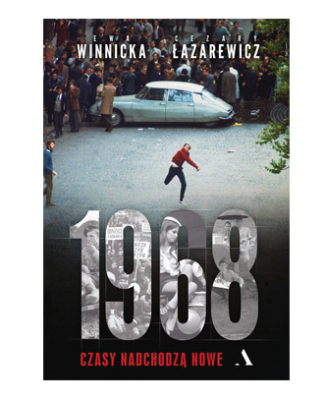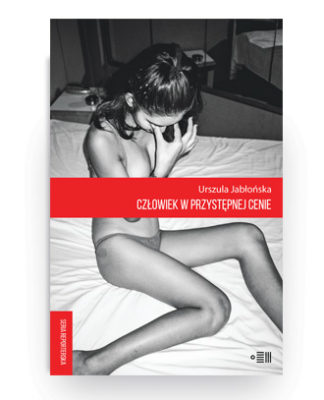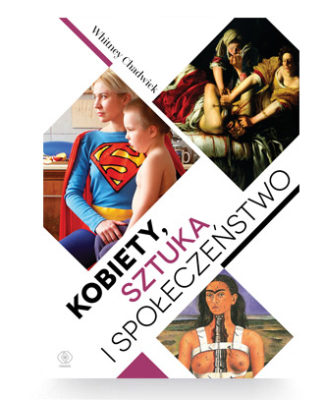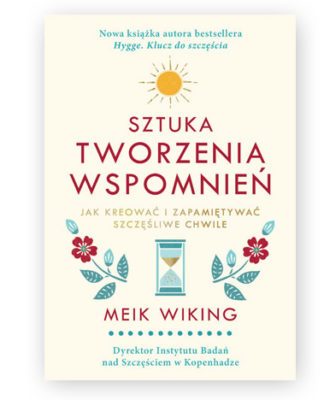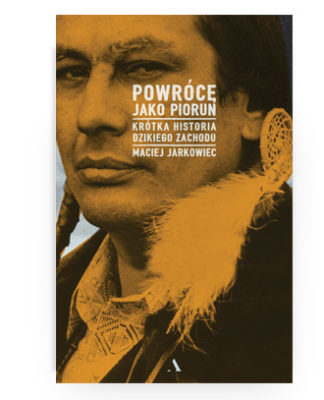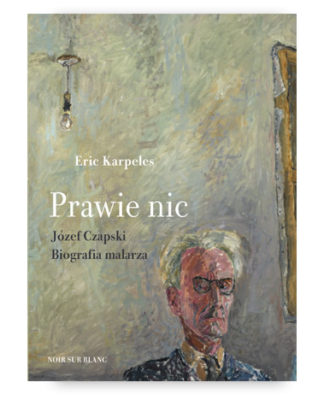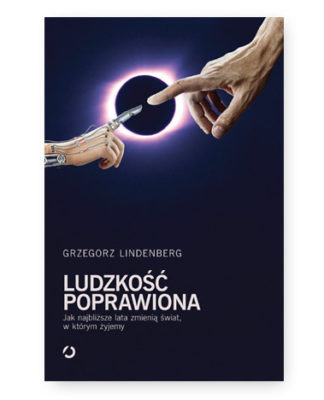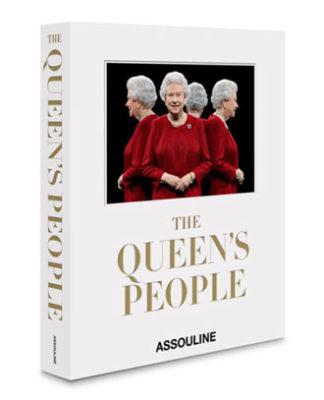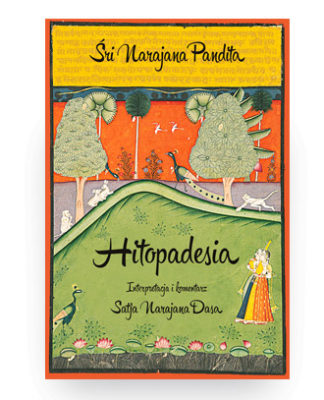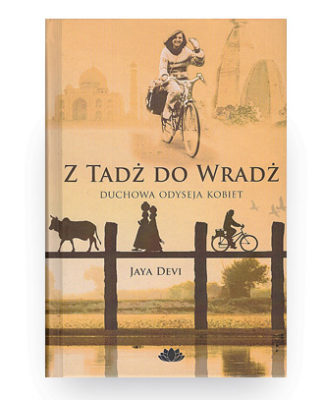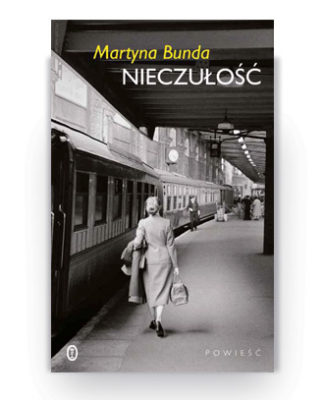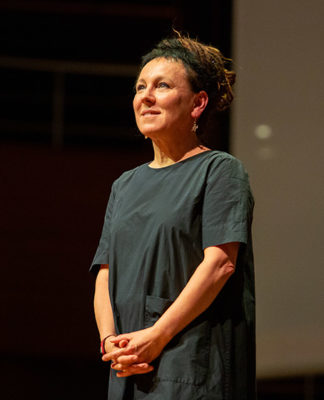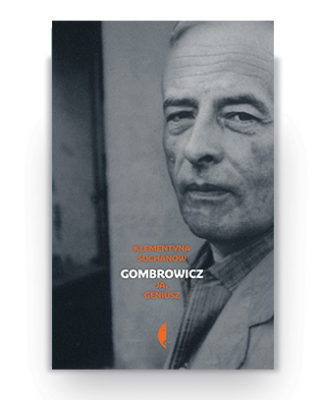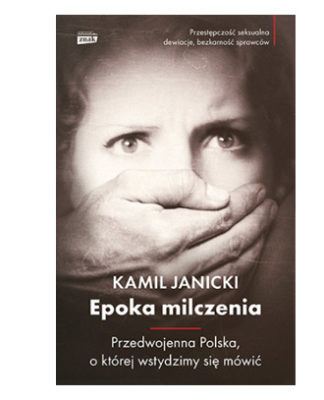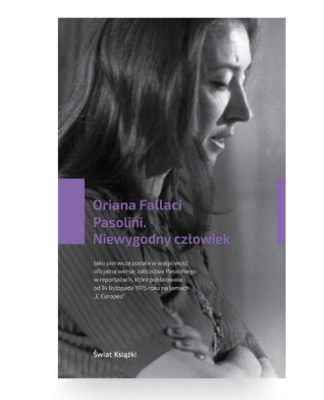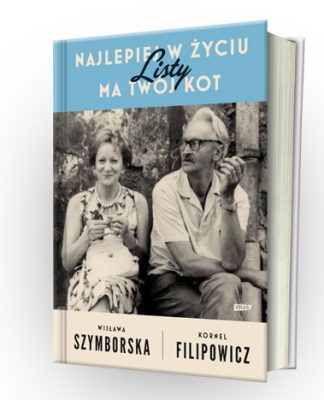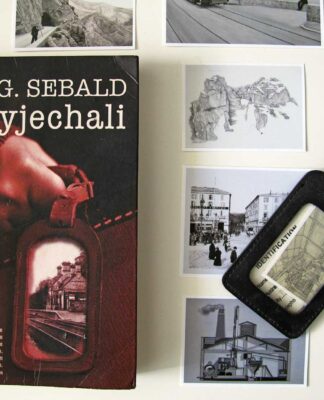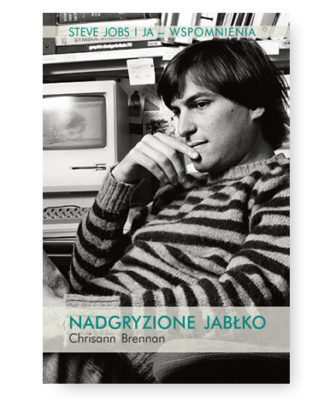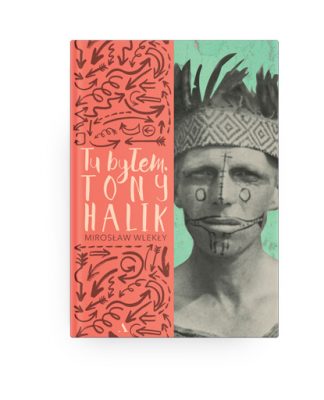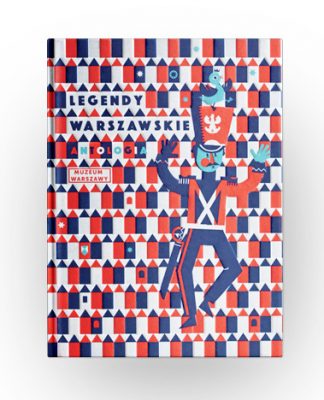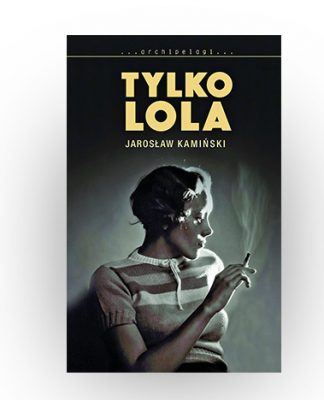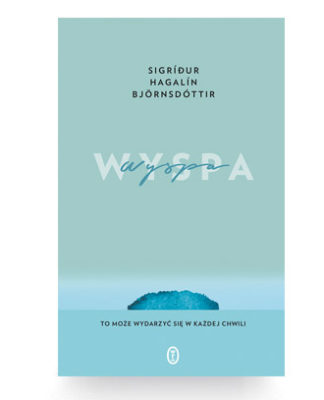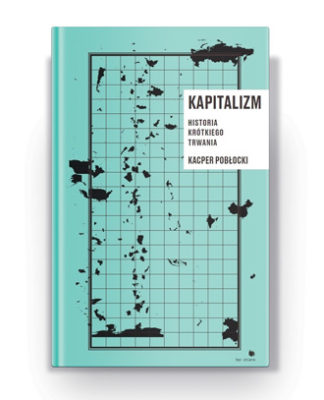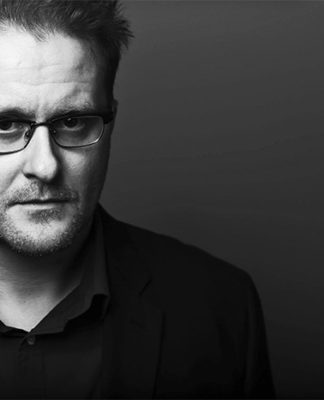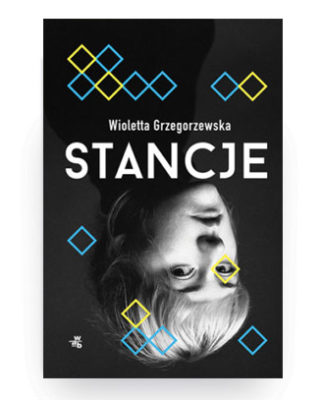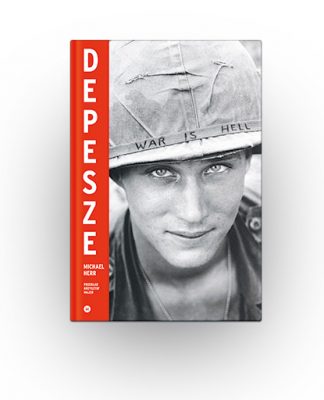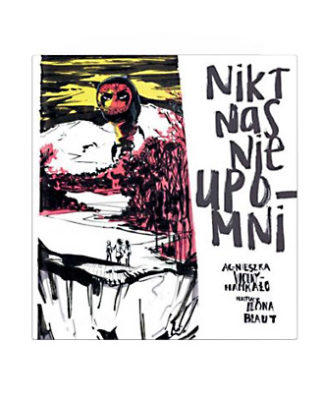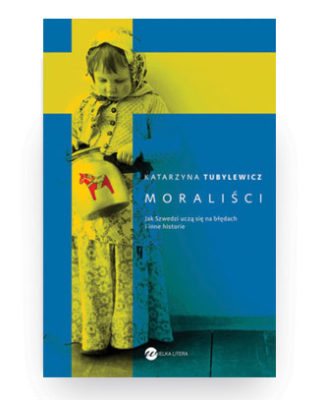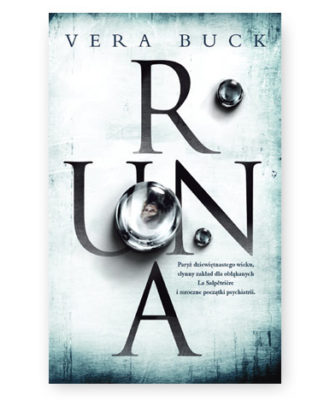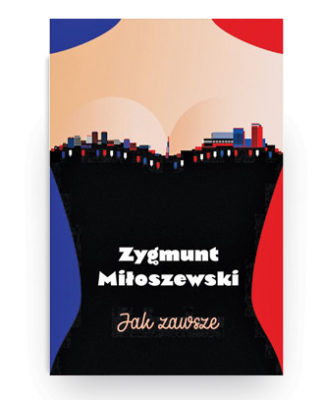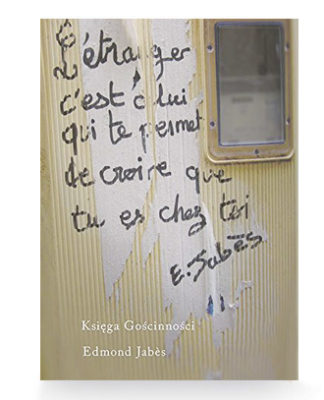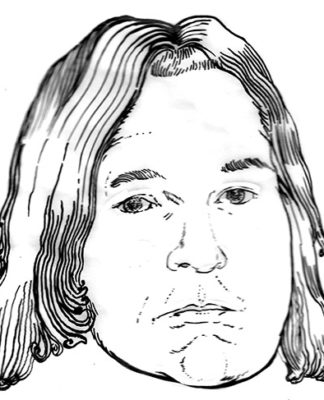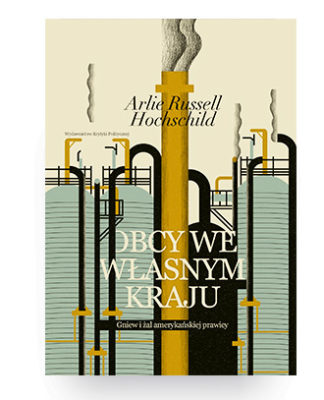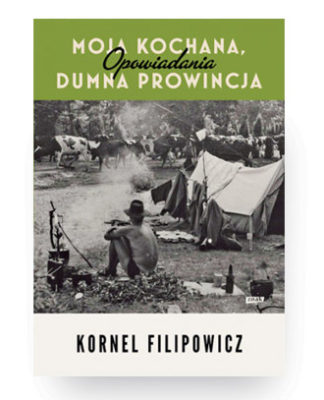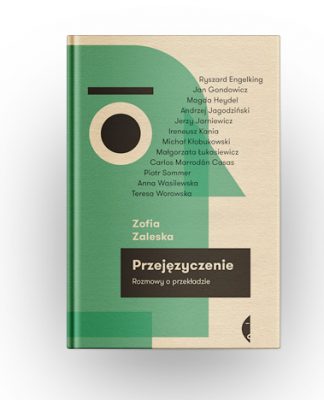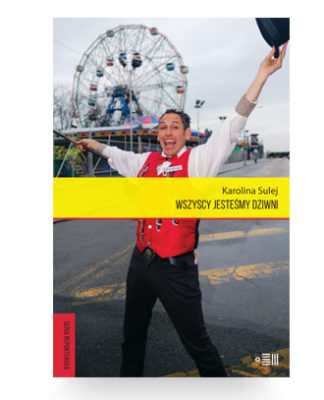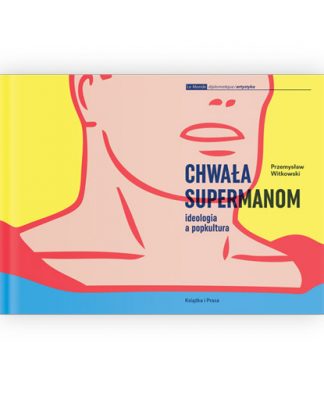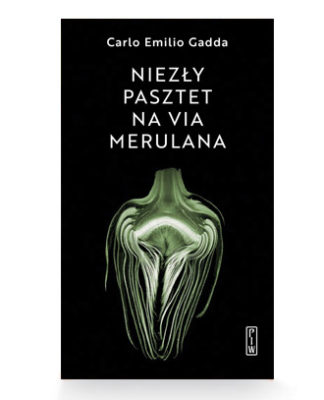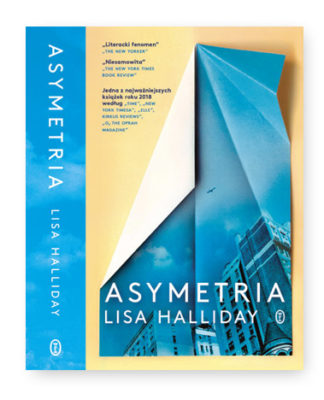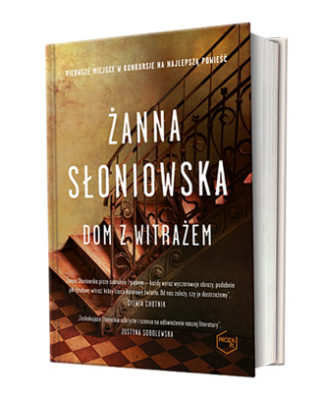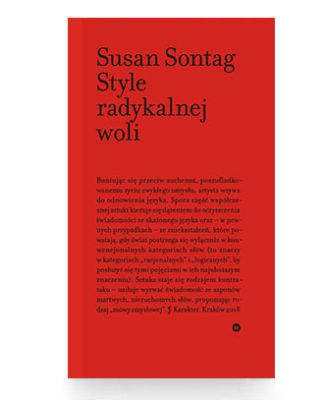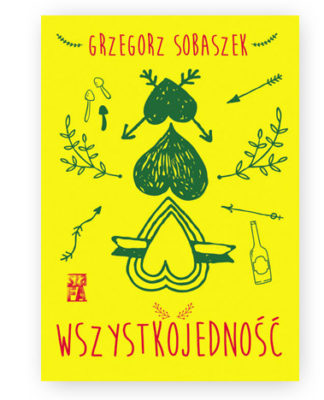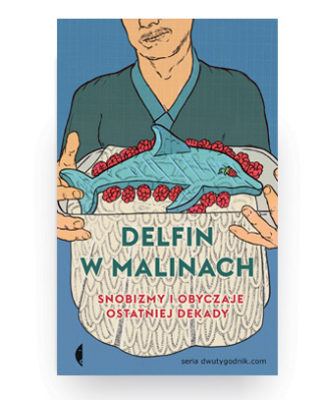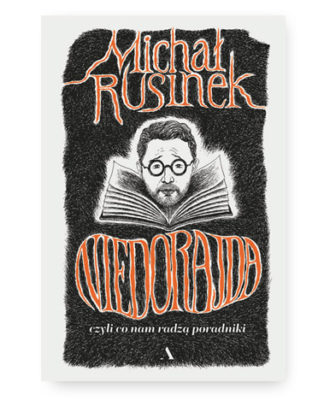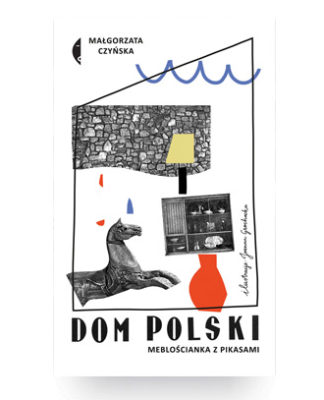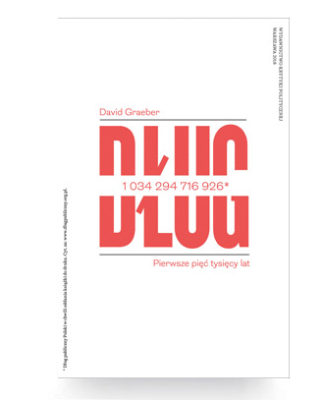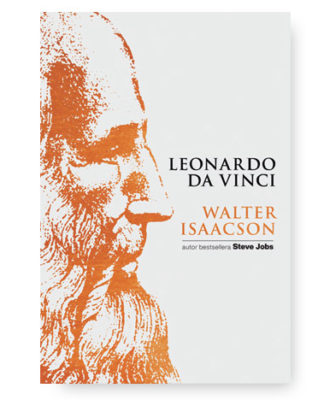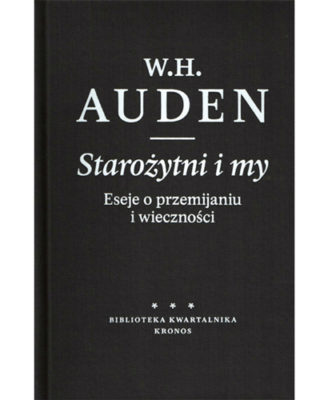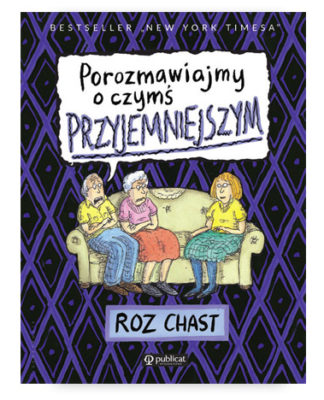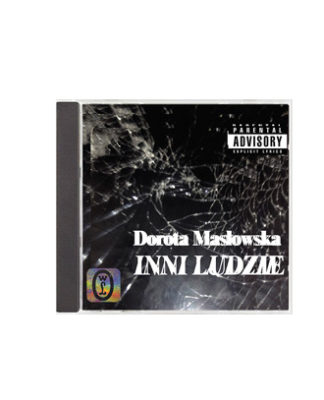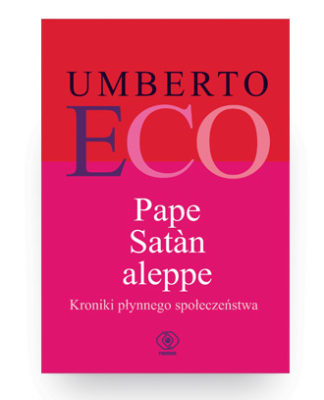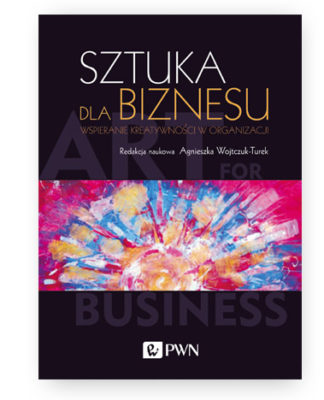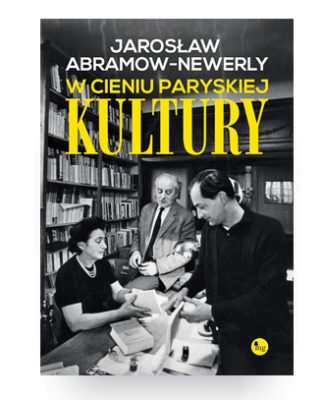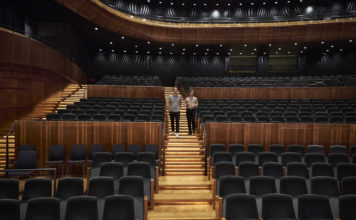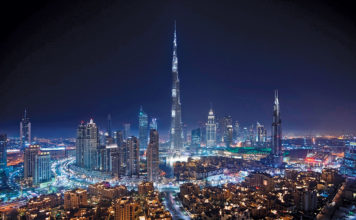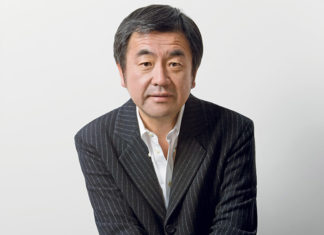![]()
Rod Quinn w rozmowie z Lyndonem Terracinim
Redaktor prowadzący: Jansson J. Antmann*
Zdjęcia: Prudence Upton
Współczesną operę trudno sobie wyobrazić bez Lyndona Terraciniego. Nie wystarczył mu jednak sukces na scenie, toteż zaczął kształtować branżę zza kulis w różnych rolach, takich jak dyrektor artystyczny festiwalu w Brisbane, członek międzynarodowego jury Biennale w Wenecji i dyrektor artystyczny Opery Australia od 2009 r.
Jako baryton zadebiutował w Albercie Herringu Benjamina Brittena w 1976 roku. Po 1983 roku stał się specjalistą od głośnych współczesnych produkcji operowych, śpiewając wiele światowych premier, w tym Metamorphosis w reżyserii Briana Howarda, z librettem Stevena Berkhoffa na podstawie tekstu Franza Kafki. W 2018 r. został odznaczony jednym z najwyższych wyróżnień cywilnych we Włoszech – Orderem Gwiazdy Włoch (Commendatore dell’Ordine della Stella d’Italia). Rozmawiamy z nim wkrótce po światowej premierze nowej opery Whiteleyw Sydney Opera House.
Czy to prawda, że gdzieś w Australii zawsze gra opera?
Przestajemy grać tylko na dwie noce w roku – Wielki Piątek i Boże Narodzenie – i wykonujemy 600 przedstawień rocznie w całym kraju. Często mamy trzy spektakle dziennie w różnych miastach. Na przykład w tę sobotę w Queensland w mieście MacKay wystawiamy Madama Butterfly w ramach naszej krajowej trasy. 1700 kilometrów stąd, w Sydney, mamy popołudniowy spektakl opery Whiteley, a następnie wieczorny spektakl innej inscenizacji Madama Butterfly.
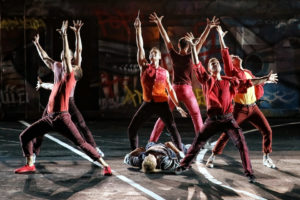
A jednak większość ludzi nadal kojarzy twój zespół z gmachem opery w Sydney, mimo że przenosiłeś się dalej z coroczną plenerową Handa Opera na Sydney Harbour i operami wystawionymi w swoim przepastnym warsztacie scenograficznym.
Rzeczywiście w przeszłości gmach opery był punktem centralnym. Jednak zmieniamy się. Jestem bardzo zadowolony ze statystyk, które ostatnio otrzymałem na temat tegorocznej opery w porcie. Po raz pierwszy wystawiliśmy musical – West Side Story – wyreżyserowany przez genialną reżyserkę operową Francescę Zambello. Zostaliśmy poinformowani, że 70% osób, które kupiły bilet, potwierdziło, że głównym powodem ich odwiedzin w Sydney była nasza inscenizacja West Side Story. Oznacza to, że to chodzi o nas, nasz zespół
artystyczny, a nie o atrakcyjne turystycznie miejsce.
W tym roku, w ramach ogólnoświatowych obchodów setnych urodzin Leonarda Bernsteina, prezentujesz dwie różne produkcje West Side Story. Wiele osób zakwestionowało logikę prezentacji jednej inscenizacji w porcie w stylu festiwalu w Bregencji, i kolejnej kilkaset metrów dalej, w gmachu opery w Sydney.
Nie rozumiem tych zastrzeżeń. To samo zrobiliśmy z Aidą i Madama Butterfly w poprzednich sezonach. Zaprezentowaliśmy inscenizacje obu oper wewnątrz i na zewnątrz, i wszystkie odniosły sukces. To samo dotyczy West Side Story. Inscenizacja wewnątrz ma unikalną australijską obsadę, która obecnie podróżuje po świecie. Premiera odbyła się w Melbourne przed wyjazdem do Nowej Zelandii, a następnie do Europy. Zespół jest obecnie w Staatsoper Unter den Linden w Berlinie i wkrótce wystąpi w Semperoper w Dreźnie, zanim wróci do Opery w Sydney. Inscenizacja cieszy się ogromnym międzynarodowym sukcesem, przyciąga uwagę i dzieli się popularnością z naszą wcześniejszą produkcją na świeżym powietrzu w Sydney Harbour.
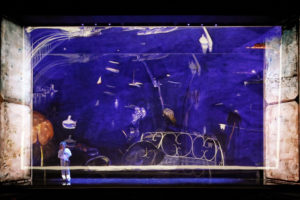
Kiedy idziemy do opery, słyszymy o kompozytorach takich jak Verdi, Rossini czy Wagner. W musicalach kompozytor i autor tekstów są zawsze razem, na przykład Lerner & Loewe, Rodgers & Hammerstein, Kander & Ebb. Dlaczego tak nie jest w operze? Dlaczego librecista zostaje zepchnięty na bok?
To interesujące. W przeszłości musical był zazwyczaj sztuką z piosenkami, a scenariusz był podstawą. W operze libretto na ogół nie jest tak ważne jak muzyka i tradycyjnie librecista nie jest tak ważny jak kompozytor. Chociaż librecista zwykle musi wymyśleć tekst przed napisaniem jakiejkolwiek muzyki, opery bazują na muzyce, a nie na tekście. Dlatego kompozytor stał się najważniejszym artystą w tym kreatywnym zespole. Weźmy na przykład La Boheme. Puccini i Leoncavallo napisali własne wersje, a nawet walczyli o to, kto jest lepszy, ale nikt nie pamięta oryginalnej powieści Henri Murgera, na podstawie ktorej powstały ich opery, ani oryginalnej sztuki zaadaptowanej przez Murgera z Théodore Barrière. Kto pamięta autorów libretta do wersji Pucciniego – Luigi Illica i Giuseppe Giacosa, którzy napisali także libretta do oper takich jak Tosca i Madama Butterfly. Razem z Leoncavallo przyczynili się nawet do powstania libretta Manon Lescaut. Jednak pomimo całego ich wkładu pamiętamy tylko Pucciniego.
Ale możesz to zmienić, prawda?
Możemy i robimy to w przypadku Whiteleya. Nazwiska kompozytorki Eleny Kats-Chernin i librecisty Justina Fleminga są prezentowane obok siebie.
Czy istnieje formuła idealnej opery? Przecież niektóre z nich są bardzo długie! Musisz o tym pamiętać, kiedy planujesz sezon. Dwie godziny z przerwą – to fantastyczne, ale jeśli opera trwa trzy i pół godziny z jedną dwudziestominutową przerwą, myślisz: O mój Boże, to będzie długa noc!
Lubię karać ludzi [śmiech]. To prawda, że żyjemy w innych czasach. Dzisiaj ludzie nie są w stanie utrzymać skupienia zbyt długo. Jeśli nie jest to Pierścień Nibelunga Wagnera, publiczność nie chce długich oper. Puccini był mistrzem komponowania wszystkiego, co powinno znaleźć się w przedstawieniu operowym, w stosunkowo krótki i zwięzły sposób. Zapewne nie zdawał sobie z tego sprawy, że współcześni kompozytorzy, tacy jak Andrew Lloyd Webber, uznają czas trwania utworów, takich jak La Boheme, Tosca i Madama Butterfly, za idealny dla dramatu muzycznego. One są skonstruowane w taki sam sposób, jak współczesny musical. Puccini był geniuszem nie tylko dlatego, że pisał tak niesamowite opery, ale dlatego, że je tak konstruował. To mistrzowskie. Sprawia, że wieczór w teatrze jest idealny.
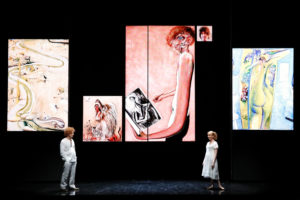
Opery, o których wspomniałeś, obok Traviaty, Aidy, Carmen i Rigolettanależą do najpopularniejszych w operowym repertuarze. Wszystkie mają wspólną cechę: bohaterka zostaje zabita lub umiera z powodu jakiejś strasznej choroby.
To niefortunne, ale to prawda. Trzeba zadać sobie pytanie, dlaczego publiczność tak bardzo lubi te opery. Ludzie mówią mi cały czas, że lubią płakać w operze. Może to oczyszczające doświadczenie, dzięki któremu zapominają o własnych życiowych stresach.
Osobiście uważam, że bardziej okazujemy współczucie pokrzywdzonym kobietom niż mężczyznom w podobnych sytucjach. Źle traktowana kobieta uruchamia myśli o naszych matkach, naszych córkach, i reagujemy niezwykle silnie.
Ostatnio przetoczyła się debata, której wynikiem było publiczne wezwanie do bojkotu tradycyjnych dzieł operowych na rzecz nowych oper napisanych przez kobiety, osoby niebinarne lub o zróżnicowanym pochodzeniu kulturowym.
Zamówiłem dwie opery dla Opery Australia, obie napisane przez kobiety. Kate Miller-Heidke, która reprezentowała Australię na tegorocznym Konkursie Piosenki Eurowizji, i pochodzi z innego środowiska kulturowego niż wielu kompozytorów, którzy prowadzili kampanię na rzecz tego bojkotu. Elena Kats-Chernin, także wywodzi się z innego kręgu etnicznego, jest przy tym bardzo utalentowaną, wspaniałą kompozytorką. Rozumiem taką postawę, ale jeśli ktoś chce zmienić cały repertuar, będzie musiał pozbyć się poezji Johna Donne’a. A co zrobić z Szekspirem? Co robić, gdy idziesz do galerii sztuki? To wszystko dzieła sztuki swoich czasów, do których się odnoszą. Tak się składa, że są także jednymi z największych arcydzieł w zachodnim kanonie i historii ludzkości w ogóle. Mówiąc szczerze, z mojej perspektywy niedorzeczne jest pozbywanie się największych dzieł, jakie kiedykolwiek powstały. Oczywiście, idziemy naprzód i chcemy tworzyć nowe dzieła, które osadzone są w naszych czasach, co jest jednym z powodów, dla których chciałem stworzyć operę o Bretcie Whiteleyu. Chodzi o niezwykłego artystę z Sydney – NASZEGO Sydney.
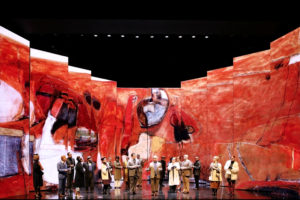
W jaki sposób opera zostanie odebrana poza Sydney?
To opowieść o ludziach, którzy dorastali w Sydney, a następnie wyjechali w świat. Dotyczy to wielu ludzi z tego miasta. Brett Whiteley może być uważany za kwintesencję artysty z Sydney, ale to opowieść o artyście i jest uniwersalna. Tak się składa, że pochodził z Sydney, a ci, którzy tu mieszkają, z pewnością identyfikują się ze swoim życiem i pracą. Brett Whiteley jest znany na całym świecie, to jeden z wielkich artystów XX wieku, którego kariera wiodła przez cały świat, w tym do Londynu i nowego Jorku, gdzie zaprzyjaźnił się z Janis Joplin, Bobem Dylanem i Francisem Baconem. Whiteley był najmłodszym, żyjącym artystą, którego obraz znalazł się w zbiorach londyńskiej Tate Gallery. Tate kupiła jego obraz, gdy Whitley miał 22 lata. Jednak tak naprawdę chodzi o walkę z uzależnieniami. Uważałem, że bardzo ważne jest wyraźne ukazanie w operze dylematu, przed którym stanął. Miał świadomość, że dalsze branie narkotyków skończy się tragedią, wiedząc jednocześnie, że bez nich nie jest kreatywny. To swoisty Taniec Śmierci, i chociaż w każdym przypadku przebiega inaczej, wielu artystów stoi przed tym dylematem. Jak radzą sobie z życiem rodzinnym? Czy są bardziej kreatywni samodzielnie czy z partnerem? Może są z kimś, kto może nie jest idealny, a może nawet jest destrukcyjny, ale wspomaga ich kreatywność – jak to było w przypadku Francisa Bacona. Ważne jest, aby publiczność dostrzegła te dychotomie w życiu artysty.
Whiteley to nie tylko opera o artyście. Chodzi też o jego żonę. W rzeczywistości to ona jest kluczem tej historii i gwiazdą opery.
Absolutnie, koniec należy do Wendy Whitelely i tajemniczego ogrodu z widokiem na Sydney Harbour, który stworzyła w zatoce Lavendar i nadal nim się opiekuje. Tak się składa, że on umiera, a ona nie. Aby pokonać swój smutek, Wendy postanawia stworzyć własne dzieło sztuki ogrodniczej. To prawdziwa historia i piękne zakończenie opery. Nie zamierzaliśmy świadomie tworzyć opery, w której umiera mężczyzna, ale chodziło o stworzenie dzieła, które dotyczy kultury naszego miejsca i naszych czasów. W całej historii, która jest przed nami, wartościowe elementy przetrwają, a inne zostaną zapomniane.
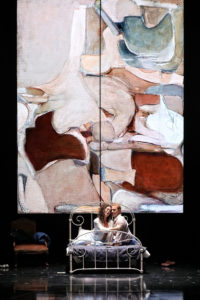
Wendy Whiteley była też częścią procesu powstawania opery o jej zmarłym mężu. Co myślała, kiedy zobaczyła swoje życie na scenie, do tego w otoczeniu innych ludzi?
Wendy uczestniczyła w kilku próbach. Płakała kiedy oglądała scenę, w której umiera malarz i rzeźbiarz Joel Elenberg. Ponieważ była to próba, powtórzyliśmy scenę i Wendy znów wybuchnęła płaczem. Joel był bardzo bliskim przyjacielem Bretta i Wendy, była przez to niezwykle poruszona. Oczywiście ma swoje zdanie na temat opery. To musi być niezwykłe widzieć własne życie ujawnione i upublicznione na scenie w mieście, z którego pochodzisz. Potrzeba na to ogromnej odwagi. A kiedy siedzisz w teatrze wypełnionym przez 1500 osób i widzisz owację na stojąco po przedstawieniu, opowiadającym o osobie, z którą przeżyłeś większość życia, to musi wydawać się niezwykle surrealistyczne. Mogę sobie tylko wyobrazić, jak olbrzymie muszą być takie emocje.
Jak teraz Whiteley wpisuje się do kanonu repertuarowego Opery Australia?
Ludzie byli wielokrotnie rozczarowani, oglądając współczesne opery, a niektóre po prostu znienawidzili. Wszystkie nasze badania pokazują, że jeśli ludzie lubią muzykę, ale inscenizacja jest zła, prawdopodobnie będą chcieli zobaczyć ją ponownie w wersji innego reżysera. Jeśli jednak nie lubią muzyki, nigdy nie chcą jej ponownie oglądać. Chcieliśmy koniecznie zaprezentować dzieło, które będzie podobało się publiczności. Myślę, że Elena Kats-Chernin wykonała fantastyczną pracę przy komponowaniu muzyki. Czasami jest prowokacyjna i ostra, ale jest to zasadniczo piękne muzyczne doświadczenie. Sprzedaliśmy dużo biletów i odzyskaliśmy naszą inwestycję.
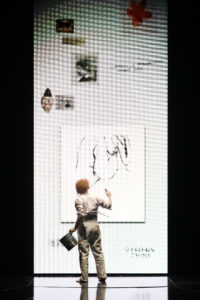
Skąd wiesz, czy publiczność będzie chciała to zobaczyć po raz drugi?
Do pewnego stopnia muszę polegać na moim instynkcie podczas planowania sezonu. Jednak przeprowadziliśmy sondaż wśród wielu osób, które kupiły bilety, aby dowiedzieć się, czy chcą ponownie zobaczyć tę operę. Dzięki temu wiemy czy w ogóle warto, i jak często, ją powtarzać. Mogę powiedzieć, co mnie bardzo cieszy, że operę włączyliśmy już do sezonów 2021 i 2023 i mam nadzieję, że pozostanie w naszym repertuarze. Mieliśmy również spore międzynarodowe zainteresowanie tym dziełem i byłoby wspaniale, gdyby również za granicą powstała jego realizacja. Oczywiście chcielibyśmy, aby nowe opery, które stworzymy w ciągu najbliższych kilku lat, stały się nie tylko częścią naszego repertuaru, ale także międzynarodowego operowego kanonu przyszłości. |
Karnety abonamentowe już w sprzedaży. Zapraszamy Państwa do zapoznania się z programem kolejnego sezonu 2020.
* Wywiad został pierwotnie wyemitowany w programie „Overnights” w radiu ABC w Australii i dostosowany do druku wyłącznie dla Magazynu La Vie.
![]()
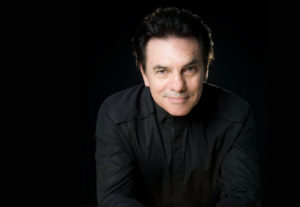
Future Classic
Rod Quinn in conversation with Lyndon Terracini
Editor: Jansson J. Antmann*
Photos: Prudence Upton
It is hard to imagine today’s operatic landscape without Lyndon Terracini. Not content with conquering the stage, Terracini went on to shape the industry behind-the-scenes in a variety of roles such as Artistic Director of the Brisbane Festival, a member of the International Jury for the Venice Biennale and the Artistic Director of Opera Australia since 2009.
As a baritone he made his operatic debut in Benjamin Britten’s Albert Herring in 1976. By 1983 he was a contemporary opera specialist of great renown singing at many world premieres, including Brian Howard’s Metamorphosis based on the Steven Berkoff play after Kafka. In 2018 he was awarded one of the highest civilian honours in Italy – the Commander of the Order of the Star of Italy (Commendatore dell’Ordine della Stella d’Italia). We talk to him shortly after the world premiere of a new opera he commissioned, Whiteleyat the Sydney Opera House.
Is it true that the sun never sets on opera in Australia?
There are only two nights a year when we don’t perform – Good Friday and Christmas Day – and we do 600 performances a year all around the country. Often we have three shows a day in different towns. For example, this Saturday I’ll be up north in Queensland in the city of MacKay, where we are performing Madama Butterfly as part of our national tour, while 1,700 kilometres away in Sydney we’ll have a matinee performance of Whiteley followed by another production of Madama Butterfly in the evening.
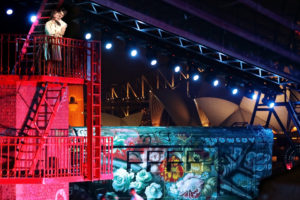
And yet, most people would still associate you with the Sydney Opera House, even though you’ve been moving further afield with your annual outdoor ‘Handa Opera on Sydney Harbour’ and operas staged in your cavernous set building workshop.
It certainly is true that in the past, the Sydney Opera House was the main drawcard. However things are changing for us. I’m very pleased with the statistics I recently received about this year’s Handa Opera on Sydney Harbour. It was the first time we staged a musical – West Side Story – directed by the brilliant opera director Francesca Zambello. We have now been informed that 70% of our audience said that our production of West Side Story was the main reason they came to Sydney. So it’s now becoming more about us as a company and not just the venue.
As part of the worldwide celebrations of Leonard Bernstein’s 100th birthday, you are actually presenting two different productions of West Side Story this year. A lot of people questioned the reasoning behind having one production on the harbour ‘Bregenz-style’ and another one a few hundred metres away in the Sydney Opera house.
I don’t see why they were concerned. After all, we’ve done the same thing with Aida and Madama Butterfly in previous seasons, and both have been successful. The same is true of West Side Story. The indoor production has a unique Australian cast, which is currently touring the world. They opened in Melbourne before travelling to New Zealand and then Europe. The ensemble is currently at the Staatsoper Unter den Linden in Berlin and they will soon perform at the Semperoper in Dresden, before coming home to the Sydney Opera House. It’s enjoying huge international success and has had no difficulty sharing the limelight with our outdoor production on Sydney Harbour earlier this year.

When we go to an opera, it’s always by Verdi, Rossini, Wagner. With musicals it’s Lerner & Loewe, Rodgers & Hammerstein, Kander & Ebb – the composer and lyricist together. Why isn’t that the case in opera? Why does the librettist get shunted to one side?
It’s interesting. With the history of musicals, they usually started off as plays with songs and the book – the script – was the primary prerequisite. In opera, the libretto has generally not been as important as the music and traditionally the librettist hasn’t been as important as the composer. Even though the librettist usually has to come up with the text before any music is written, operas tend to be primarily music driven and not text driven. Therefore the composer has become the most important artist in that creative mix. Take La Boheme for example. Puccini and Leoncavallo each wrote their own version and feuded over it, but who remembers Henri Murger’s original novel on which their operas are based, the original play adapted by Murger with Théodore Barrière, or indeed the final librettists of Puccini’s version, Luigi Illica and Giuseppe Giacosa? They also wrote the librettos for operas like Tosca andMadama Butterfly. Together with Leoncavallo, they even contributed to the libretto for Manon Lescaut. However, in spite of all their contributions, everyone just remembers Puccini.
But you could change that, couldn’t you?
We can and we have done that in the case of Whiteley. The composer Elena Kats-Chernin and librettist Justin Fleming have equal billing.
Is there a formula for the perfect opera? After all, some of them are very long! You must bear that in mind when you plan a season. Two hours with an interval is fantastic, but if it says three and a half hours with one twenty-minute interval, you think, “Wow, we’re in for a long night!”
I just want to punish people [laughs]. It’s true, we live in different times and people’s attention spans are a lot shorter. Unless it’s Wagner’s Ring of the Nibelung, audiences are not inclined to sit through a long opera. Puccini was the master of delivering everything you want in a show in a relatively short and concise way. Puccini may not have realised this, but contemporary composers like Andrew Lloyd Webber certainly recognise that works like La Boheme, Tosca and Madama Butterfly are the perfect length for a musical drama. They’re really constructed in the same way as a modern-day musical. Puccini was a genius, not only because he wrote such incredible operas, but in the way he constructed them. It’s masterful. They make for a perfect night at the theatre.

The operas you’ve mentioned stand alongside La Traviata, Aida, Carmen, and Rigoletto as the most popular in the repertoire. They also all have one thing in common: the heroine ends up getting killed or dying of some terrible disease.
It’s unfortunate but true. You have to ask yourself why the public likes those operas so much. People tell me all the time that they like to cry at the opera. Maybe it’s a cathartic experience through which they rid themselves of other stresses in their lives. I personally think we have a tendency to sympathise with women in a crisis more than men. If a woman is badly treated, it triggers thoughts of our mothers or our daughters and we respond incredibly strongly.
Nevertheless, there has been some debate resulting in a public call to boycott these traditional works in favour of new operas by women or from people with non-binary or diverse cultural backgrounds.
I’ve commisioned two operas for Opera Australia, both of them by women. Kate Miller-Heidke, who represented Australia at this year’s Eurovision Song Contest, comes from a very different background to many of the composers who have been part of this agenda and are fundamentally academics. Elena Kats-Chernin also comes from a very different ethnic background and is a very talented and wonderful composer. I’m aware of the criticism, but if you want to change the entire repertoire, you’d have to get rid of John Donne’s poetry. What are you going to do about Shakespeare? What do you do when you go to an art gallery? They’re pieces of their time and they relate to it. It so happens that they’re also some of the greatest masterpieces in the western canon and human history. From my perspective, it’s frankly ludicrous to talk about getting rid of some of the greatest works that have ever been created. Of course, moving forward we want to create new works that are of our time, which is one of the reasons I wanted to do a piece about Brett Whiteley. It’s about an extraordinary artist from Sydney – OUR Sydney.

How will the opera translate outside Sydney?
It’s a story about people who grew up in Sydney and then went out into the world. That’s true of so many Sydney-siders. Brett Whiteley may be regarded as a quintessentially Sydney artist, but it is a story about an artist and that is universal. It so happens that he was from Sydney and those of us who live here certainly relate to his life and work. That said, Brett Whiteley is known all around the world. He is one of the great artists of the 20th Century, whose career took him around the world, including London and New York, where he befriended the likes of Janis Joplin, Bob Dylan and Francis Bacon. At the age of 22, Whiteley was the youngest living artist to have a painting purchased by the Tate Gallery in London. However, it is ultimately about the struggle he had with his addictions and in knowing that if he continued to use the drugs he was taking, it would ultimately end in tragedy. I felt it was very important to clearly portray the dilemma he faced in the opera. He knew that when he didn’t abuse those substances, he wasn’t creative. It was the Dance of Death and although it varies from artist to artist, many of them face this dilemma in terms of the way they live their lives. How do they cope with a family life? Are they more creative on their own, or with a partner? Maybe they are with somebody who may not be ideal, or may even be destructive, but helps their creativity – as was the case with Francis Bacon. It is important for the audience to see the dichotomies that exist in the lives of an artist.
Whiteley isn’t just about the artist. It’s about his wife. In fact, she’s the key – she’s really the star of the show.
Absolutely, at the end of the piece it’s about Wendy Whiteley and the Secret Garden which she created and continues to tend in Lavendar Bay overlooking Sydney Harbour. In this piece it so happens that he dies and she doesn’t. Instead, to overcome her grief, she sets about to create her own horticultural work of art. It’s a beautiful ending to the opera and, of course, an entirely true story. We didn’t set out to deliberately create an opera in which the man dies, but rather it was about creating a work that is about the culture of our place and of our time. Throughout history that will happen and the pieces that are worthwhile will survive, and those that aren’t will be forgotten.

Wendy Whiteley was there on opening night and she was very much a part of the developmental process that went into creating this work about her late husband. What did she think when she finally saw it on stage for the first time with an audience?
Wendy was at quite a few of the rehearsals and she attended the first workshop performance. She was in tears at the workshop and also at rehearsal during the scene in which the painter and sculptor Joel Elenberg died. Since we were rehearsing, we repeated the scene and she burst into tears again. Joel was a very close friend of Brett and Wendy and she was tremendously moved by it. Obviously she has strong opinions about the work. It’s an extraordinary thing to see your life exposed ‘warts and all’ on stage in a very, very public way in the city you’ve grown up in. It takes an enormous amount of courage to allow your life to be laid bare in front of a crowd of people you know. And when you are sitting there in a packed auditorium of 1500 people – it’s been an incredible success – it must seem incredibly surreal to see people giving a standing ovation to an opera about someone you spent most of your life with. I can only imagine what it must be like going through all of those emotions.
Where does Whiteley now fit into the canon at Opera Australia?
With contemporary operas, people have been burnt so many times when they’ve gone to see a new work and absolutely loathed it. All our research shows that if people like the music but see a bad production, they’re likely to want to see it again in a different staging. However, if they don’t like the music, they never want to see it again. So it was imperative for us that this had to be a piece people would want to see. I think Elena Kats-Chernin has done a fantastic job in composing the music. It’s provocative and spikey at times, but it is fundamentally a beautiful musical experience. It’s sold very well and we’ve recouped our investment.
How can you tell if the public will want to see it a second time?
To some degree I have to rely on my gut instinct when programming. However, we have surveyed a lot of people who saw it to find out if they would like to see it again. That gives us an idea of whether or not it’s worth presenting again and how often. I’m happy to say, I’ve already included it in our seasons in 2021 and 2023 so hopefully that will work and it will remain in our repertoire. We’ve also had international interest in the work and it would be wonderful if it would be produced overseas. Obviously, we would love if the new operas we create over the next few years became not only part of our repertoire, but also part of the international operatic canon of the future. |

Find out more about the upcoming 2020 season. Subscriptions are now on sale.
* This interview was originally broadcast on ABC radio’s ‘Overnights’ program and has been adapted exclusively for La Vie Magazine.




 Współczesne dramaty
Współczesne dramaty Present-day dramas
Present-day dramas




